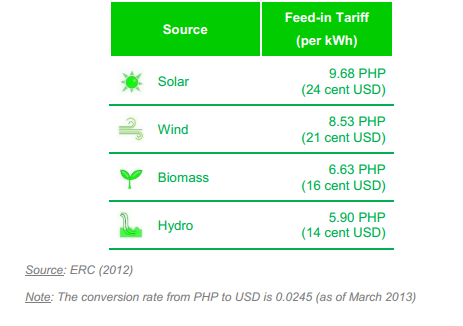Philippines Energy Situation
Capital:
Manila
Region:
Coordinates:
13.0000° N, 122.0000° E
Total Area (km²): It includes a country's total area, including areas under inland bodies of water and some coastal waterways.
300,000
Population: It is based on the de facto definition of population, which counts all residents regardless of legal status or citizenship--except for refugees not permanently settled in the country of asylum, who are generally considered part of the population of their country of origin.
115,559,009 (2022)
Rural Population (% of total population): It refers to people living in rural areas as defined by national statistical offices. It is calculated as the difference between total population and urban population.
52 (2022)
GDP (current US$): It is the sum of gross value added by all resident producers in the economy plus any product taxes and minus any subsidies not included in the value of the products. It is calculated without making deductions for depreciation of fabricated assets or for depletion and degradation of natural resources.
404,284,326,110 (2022)
GDP Per Capita (current US$): It is gross domestic product divided by midyear population
3,498.51 (2022)
Access to Electricity (% of population): It is the percentage of population with access to electricity.
97.49 (2021)
Energy Imports Net (% of energy use): It is estimated as energy use less production, both measured in oil equivalents. A negative value indicates that the country is a net exporter. Energy use refers to use of primary energy before transformation to other end-use fuels, which is equal to indigenous production plus imports and stock changes, minus exports and fuels supplied to ships and aircraft engaged in international transport.
45.77 (2014)
Fossil Fuel Energy Consumption (% of total): It comprises coal, oil, petroleum, and natural gas products.
62.43 (2014)
Energy Situation
The Philippines is an emerging economy and its economy has greatly shifted from agriculture to industry.In terms of energy use, conventional fossil fuels (oil and gas) are the main source for its primary energy demands. According to the 2011 primary energy consumption of the Philippines, 31% of the consumption was met by oil, 20% by coal, 22% by geothermal, 12% by biomass, 6% by hydro and 1% by other renewable energy like wind, solar and biofuel. [1]
The Philippines is located in the Pacific Ring of Fire and thus has a high geothermal potential. In terms of electricity generation, 41.4% of the electricity demand is met by geothermal energy, 28% by coal, 11.4% by hydro, 15% by natural gas and 0.1% by wind, solar and biofuel. In terms of installed capacity for power generation Hydro is 63.2%, 35.1% is geothermal , 1.1% is biomass and 0.6% by wind and 0.1% solar. [1]
Electricity Situation
The table below provides an overview of the electricity tariffs in Philippiness[1]:

Policy
The Government of Philippines has introduced various policies to foster renewable energy . Some of the policies are income tax holiday up to 7 years, duty-free import of equipment for renewable energy technologies and so on. In 2012, the government launched the new feed-in tariff (FIT) and is summarized in the table below[1]:






















